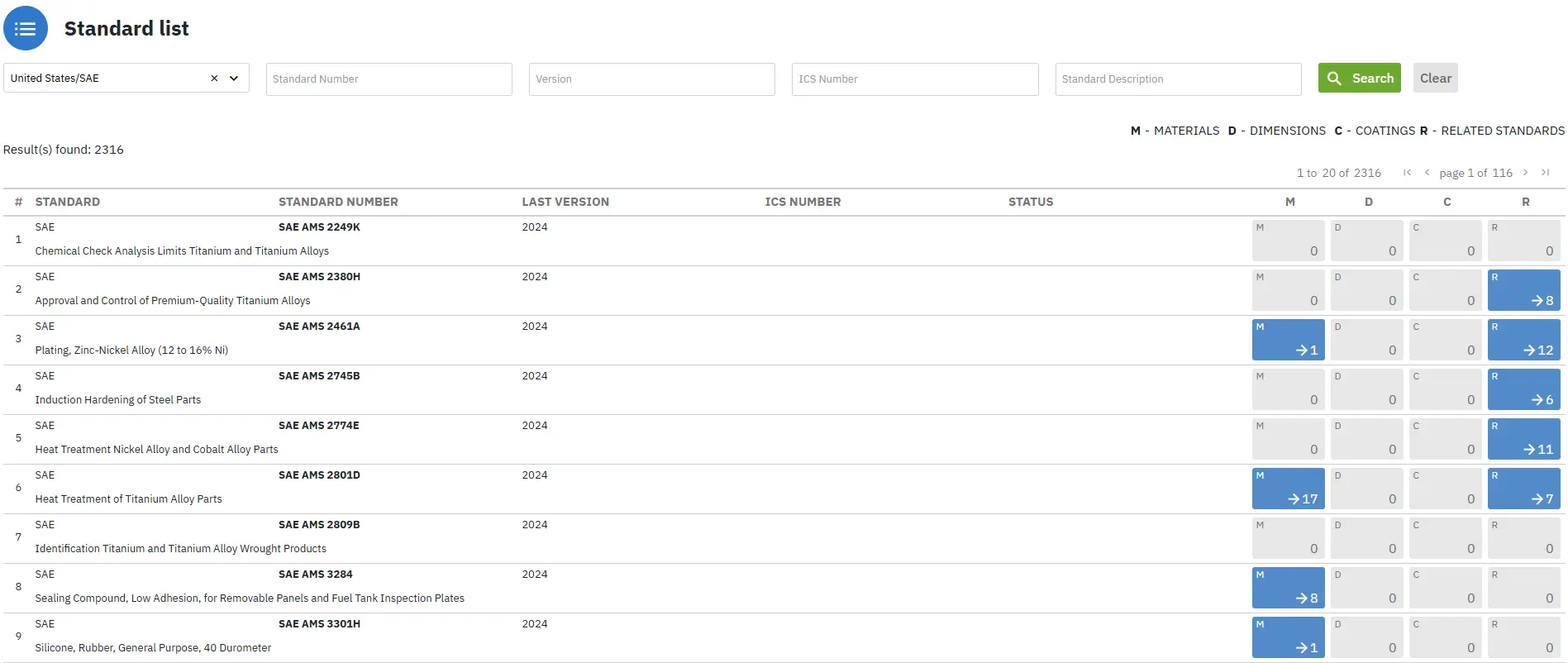Introduction to the SAE AMS Designation System
Abstract
The SAE AMS designation system is a standardized method for identifying the compositions of alloy steels, using a numerical index. This system is particularly useful for classifying different types of steels based on their alloying elements and carbon content. The first digit of the number designates the steel's type, while the second digit generally indicates the predominant alloying element's approximate percentage. The last two digits indicate the carbon content. While this system is straightforward for most alloy steels, certain alloys, such as corrosion-resistant and heat-resistant steels, may deviate from the standard format. The SAE AMS system ensures clarity and consistency in steel classification and is widely used in various industries, including automotive and manufacturing.
Overview of the SAE AMS Designation System
The SAE AMS designation system uses a numeral index to identify the compositions of alloy steels. This system allows for the use of numerals that partially describe the material's composition. The first digit in the numeral denotes the steel's type. For instance, "1" indicates carbon steel, "2" represents nickel steel, and "3" refers to nickel-chromium steel, among others.
Understanding Steel Composition and Alloy Classification
In basic alloy steels, the second digit typically represents the approximate percentage of the predominant alloying element. For example, "2340" indicates a nickel steel with approximately 3% nickel (ranging from 3.25% to 3.75%) and 0.40% carbon (ranging from 0.38% to 0.43%).
The last two digits usually denote the carbon content in hundredths of a percent. For instance, "xx45" means a steel with 0.45% carbon.
How the SAE AMS System Classifies Carbon Content
For example, the AISI 4340 designation represents a nickel-chromium-molybdenum steel with 1.8% nickel, 0.8% chromium, 0.25% molybdenum, and 0.4% carbon. Similarly, the 9260 steel is a spring steel containing 2.5% silicon, 0.9% manganese, and 0.6% carbon. The 52100 designation refers to ball bearing steel, which contains 1.45% chromium and 1.0% carbon.
Deviation from Standard SAE AMS System for Special Alloys
In some instances, to avoid confusion, the SAE AMS system departs from its standard format. For certain alloys, especially corrosion-resistant and heat-resistant steels, the second and third digits may differ from the standard pattern to ensure proper identification.
Applications of the SAE AMS Designation System
The SAE AMS designation system is extensively used across various industries, including the automotive, aerospace, and manufacturing sectors. It enables precise identification and classification of alloy steels based on their composition, making it a critical tool for engineers and metallurgists.
Click on the link to see a list of SAE AMS standards covering the following material categories:
Group of standards for stainless steels: Part One
Group of standards for stainless steels: Part Two
Group of nickel alloys/heat resistant nickel alloys
Group of standards for iron and steel castings
Group of standards for forgings
Group of standards for coated steels & welding and filler materials
Мгновенно находите и сравнивайте материалы по стандартам SAE!
Total Materia Horizon содержит точную информацию по тысячам материалов по стандартам SAE. Обновляется ежемесячно.

Получите бесплатный тестовый аккаунт в Total Materia Horizon и присоединяйтесь к сообществу из более чем 500 000 пользователей из 120+ стран.